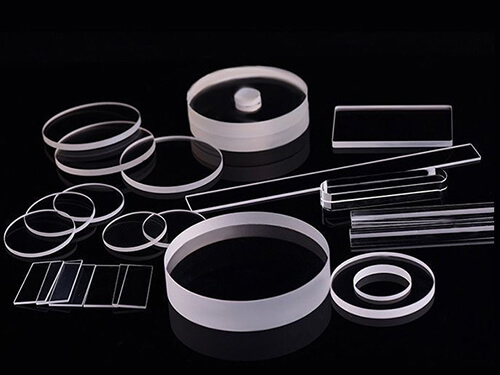When it comes to choosing the right type of glass for various applications, understanding the differences between soda lime glass and tempered glass is essential.
Both materials have distinct characteristics that make them suitable for different purposes.
In this article, we will compare soda lime glass and tempered glass, examining their properties, strengths, weaknesses, and applications to help you make an informed decision.
Soda Lime Glass:
Soda-lime glass, also known as float glass, is the most common type of glass used in everyday applications. It is made by melting a mixture of silica, soda ash, and lime at high temperatures.
Here are the key features of soda lime glass:
Transparency
Soda lime glass offers excellent optical clarity and allows light to pass through without significant distortion.
Strength
It is relatively strong, but not as strong as tempered glass.
Breakage
When soda lime glass breaks, it shatters into sharp, jagged pieces, posing a risk of injury.
Thermal Resistance
It has moderate resistance to thermal changes but can crack under sudden and extreme temperature variations.
Strengths
- Cost-Effective: Soda lime glass is more affordable compared to tempered glass, making it a popular choice for mass-produced items.
- Versatility: It can be easily shaped, cut, and customized for various applications.
- Availability: Soda lime glass is widely available and can be found in everyday products like windows, mirrors, and glassware.
Weaknesses
- Fragility: Soda lime glass is more prone to breakage compared to tempered glass, especially under impact or stress.
- Safety Concerns: The shattered pieces of soda lime glass can be sharp and pose a risk of injury.
Tempered Glass
Tempered glass, also known as toughened glass, undergoes a specialized heat treatment process to increase its strength and durability.
Here are the key features of tempered glass:
Strength
Tempered glass is significantly stronger than soda lime glass, offering higher resistance to impact and bending forces.
Safety
When tempered glass breaks, it shatters into small, rounded pieces called “dice,” reducing the risk of severe injury.
Thermal Resistance
It has excellent thermal resistance, making it more resistant to sudden temperature changes.
Strengths
- Safety: The shattered pieces of tempered glass are less hazardous, making it an ideal choice for applications where safety is crucial.
- Strength: Tempered glass is approximately four to five times stronger than soda lime glass, providing enhanced resistance to breakage.
- Heat Resistance: It can withstand higher temperatures compared to soda lime glass.
Weaknesses
- Cost: Tempered glass is generally more expensive compared to soda lime glass due to the additional manufacturing process.
- Limited Customization: Once tempered, the glass cannot be cut or modified, so precise measurements are crucial before the tempering process.
Soda-lime glass and tempered glass each have their unique properties, strengths, and weaknesses. Soda lime glass is cost-effective, versatile, and widely used in everyday applications.
On the other hand, tempered glass offers enhanced strength, safety, and heat resistance, making it suitable for applications that prioritize safety and durability.
Understanding these differences will help you choose the right type of glass for your specific needs, ensuring both functionality and safety in your chosen applications.

HY offers a range of OEM custom soda-lime and tempered glass solutions tailored to your specific needs.
Contact us to learn more about how we can provide the ideal glass solution for your industry-leading products.
Email: wendy@hylasercutting.com
Tel & WhatsApp: +86 135 7058 6244